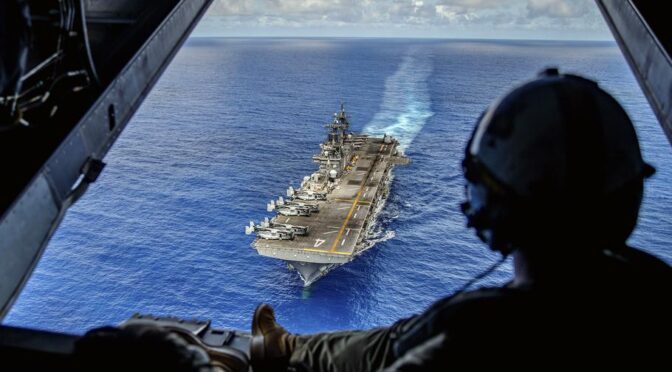Notes to the New Administration Week
By Francis Crozier
Time and time again the Navy seems to have to reckon with three irreconcilable questions:
1. What does the Navy want to do with its global reach?
2. What legitimate global interests does the Navy have?
3. Does the Navy have the logistical capability to stay in proximity to those interests?
Issues like these have stood out during Operation Prosperity Guardian, the U.S.-led effort to protect international shipping passing through the Red Sea. Two issues in particular stand out, with the first being the problems faced by the Military Sealift Command (MSC) and the second being the regular retasking and deployment extensions of warships.
The MSC backbone for fleet replenishment is often understaffed and underfunded, with few oilers in the 5th fleet area of responsibility. USNS Alan Shepard and USNS Big Horn were taken out of action after running aground in May and September of last year, leaving only USNS Amelia Earhart to replenish coalition and U.S. warships.
The Navy is fortunate to have the ability to contract private oilers on short notice that are U.S.-Navy certified and capable of refueling warships at sea. But this service comes at triple the cost of contracting MSC oilers and cannot always be relied upon if a large naval conflict were to kick off. The MSC also cannot support a global Navy with global reach if it is actively sidelining vessels to ensure proper manning to those ships it deems critical to sustain operations. Contracting private oilers is a stop-gap and not a permanent solution.
Second, Operation Prosperity Guardian required repeated retasking of critical assets from theaters where arguably the U.S. has greater strategic interests. In order to allow the Eisenhower CSG to return to Norfolk, covering the Red Sea required retasking the Theodore Roosevelt CSG from her deployment to the 7th Fleet area of responsibility. The Abraham Lincoln CSG was also retasked to the Middle East before they even entered the 7th fleet AOR. These decisions left no operating CSG in the 7th fleet for the first time since 2001, despite repeated Navy and administration pronouncements of China being the number one national security threat.
The Navy must choose its battles more carefully and come to grips with the limited resources it currently has. Repeatedly extending deployments for surface combatants and carriers critical to a war with China will result in long-term consequences for readiness, as exemplified by incidents like the delayed Boxer ARG deployment. The new administration should make a comprehensive reassessment of global force posture and consider optimizing the Navy’s presence against China, especially with the Navy focused on a potential conflict in 2027.
Francis Crozier is a pseudonym for a sailor who holds a Bachelors Degree in World Politics focusing on Russian Affairs and Economic Development from the Ohio State University. He currently serves as a Petty Officer Second Class on board a U.S. destroyer.
The views expressed here are those of the author and do not necessarily represent the official positions or opinions of the U.S. Navy, the Department of Defense, or any part of the U.S. government.
Featured Image: U.S. Marine Corps Sgt. Mitchell Parcell, a V-22 tiltrotor crew chief assigned to Marine Medium Tiltrotor Squadron (VMM) 165 (Reinforced), 15th Marine Expeditionary Unit, and a native of Montana, observes the amphibious assault ship USS Boxer (LHD 4) in the Luzon Strait Oct. 8, 2024. (U.S. Marine Corps photo by Sgt. Amelia Kang)

